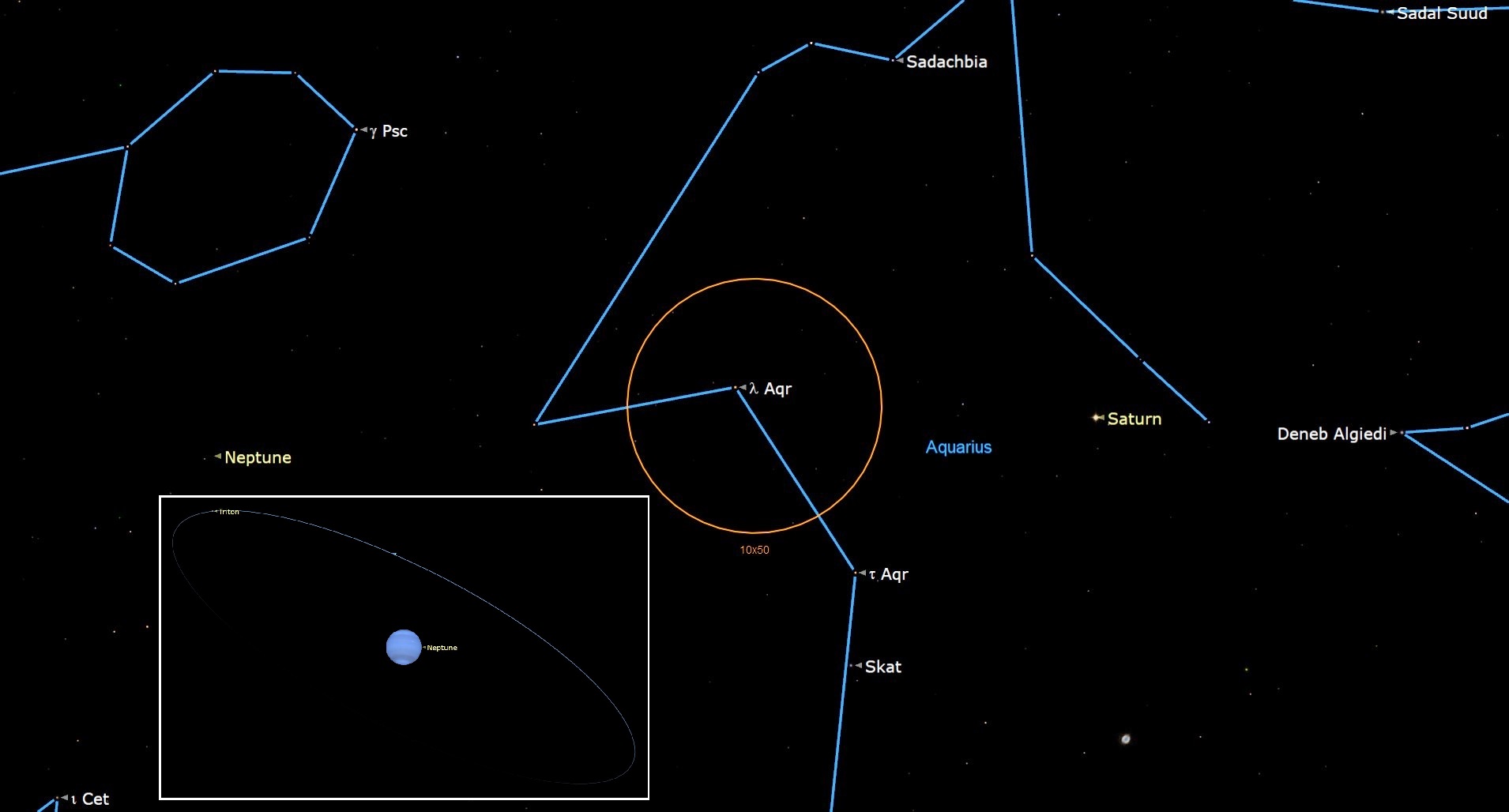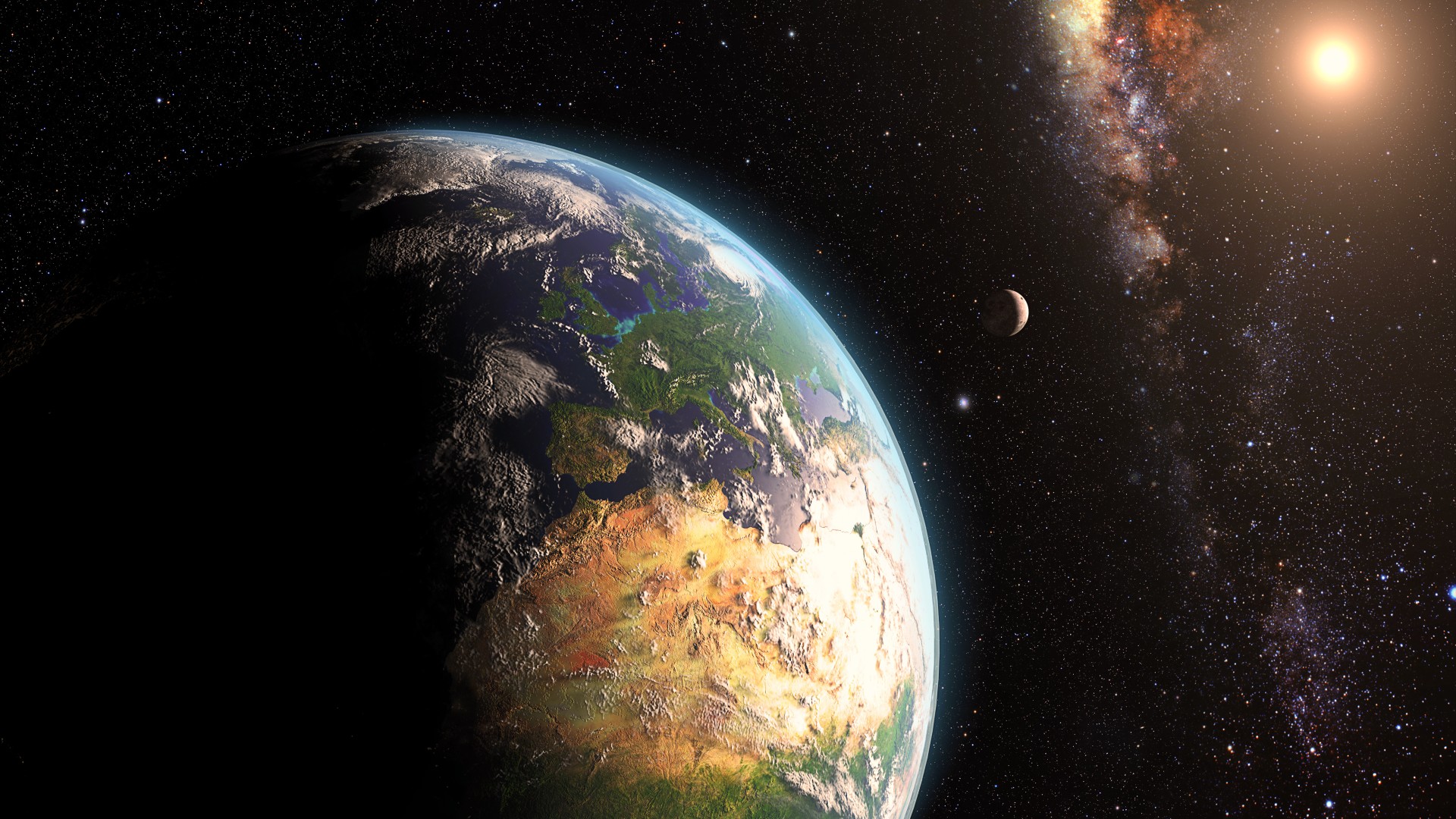
Joe Rao
Joe Rao is Space.com's skywatching columnist, as well as a veteran meteorologist and eclipse chaser who also serves as an instructor and guest lecturer at New York's Hayden Planetarium. He writes about astronomy for Natural History magazine, Sky & Telescope and other publications. Joe is an 8-time Emmy-nominated meteorologist who served the Putnam Valley region of New York for over 21 years. You can find him on Twitter and YouTube tracking lunar and solar eclipses, meteor showers and more. To find out Joe's latest project, visit him on Twitter.
Latest articles by Joe Rao

Harvest moon 2023, the last supermoon of the year, kicks off fall stargazing on Sept. 29
By Joe Rao published
The last supermoon of 2023 will illuminate the autumn sky on Friday.

See the moon and Saturn shine side-by-side in the night sky tonight
By Joe Rao published
Saturn and its rings will be visible near a bright moon tonight. Here's how to catch a glimpse of the two celestial marvels.

Autumnal equinox 2023 brings fall to the Northern Hemisphere today (Sept. 23)
By Joe Rao last updated
On Saturday (Sept. 23) at 2:50 a.m. EDT (0650 GMT), autumn begins astronomically in the Northern Hemisphere, and spring starts in the South.

Distant Neptune and Uranus make for excellent night sky sights this week. Here's how to see them
By Joe Rao published
Uranus and Neptune, the two outermost planets of the solar system, make for excellent viewing throughout the end of September. Here's how to locate and view them.

Venus is now a beacon in the early morning sky. Here's how to see it
By Joe Rao published
With each passing morning, Venus has been rising ever higher and has been getting a little brighter. The planet will reach its brightest in the morning sky on Sept. 19. Here's how to see it.

August's rare Super Blue Moon, the biggest full moon of 2023, rises tonight
By Joe Rao published
In addition to its "supermoon" status, this particular full moon will be the second to occur in the month of August, making the full moon on Aug. 30 also branded as a "Blue" moon.

Will newfound Comet Nishimura really be visible to the naked eye? Experts aren't so sure
By Joe Rao published
While social media has been abuzz with talk of new Comet Nishimura being visible to the naked eye in September, experts aren't so sure.

See the moon eclipse the red supergiant star Antares tonight
By Joe Rao published
Red supergiant Antares, the 15th brightest star in the night sky, will appear to abruptly blink out behind the moon's dark limb during a lunar occultation on Aug. 23, 2023.

See Jupiter and the half moon join up in the night sky tonight
By Joe Rao published
The moon and Jupiter will be just under the feet of Aries the Ram, in the night sky on the evening of Monday, Aug. 7. With the right binoculars, you could see five moons at once.

The Perseid meteor shower peaks in August. Here's how to see it
By Joe Rao published
The Perseid meteor shower, one of the most dependable annual showers, peaks on Aug. 12 and 13, and this year looks great for meteor watchers in North America.

The summer meteor showers of 2023 could be awesome. Here's how to see them
By Joe Rao published
One of the best meteor displays of the year will be visible soon: The Perseid Shower. But there also are a number of minor meteor displays that will be peaking in the next couple of weeks.

Mars and Venus leave the night sky this month. Here's how to say goodbye
By Joe Rao published
Mars and Venus have been brilliant in the night sky for many months on end but will soon say farewell as July 2023 comes to a close.

Happy Aphelion Day! Earth is at its farthest from the sun for 2023 today
By Joe Rao published
Earth reaches the farthest point in its orbit around the sun for 2023, called aphelion, on Thursday (July 6) at a distance of 94,506,364 miles (152,093,250 km).

One of the longest solar eclipses on Earth darkened the sky 50 years ago. Here's how it happened.
By Joe Rao published
Fifty years ago, on Saturday, June 30, 1973, one of the longest total eclipses of the sun in modern times took place.

What causes the strange green flash at sunset and sunrise on Earth?
By Joe Rao published
There are very special cases, when the sky is very clear and exceptionally transparent, that a green flash can be glimpsed just as the very topmost part of the sun is rising or setting.

June Solstice 2023: How twilight zones affect day length
By Joe Rao last updated
June 21, the day of the northern summer solstice, has much more than 15 hours of sunlight if the extensive twilight periods around dusk and dawn are taken into account.

The moon, Venus, Mars and bright stars shine in a summer celestial gathering this week. Here's how to see it.
By Joe Rao published
The crescent moon joins Mars, Venus and some of the brightest stars to kick off the summer 2024 skywatching season.

Don't miss Jupiter and its 4 Galilean satellites shine near the crescent moon tonight
By Joe Rao published
Night owls and early risers will be treated to a late-night spectacle as a bright Jupiter and the moon will appear close together in the night sky overnight.

See the stars of the Spring Triangle reach high in the sky this month
By Joe Rao published
Within the stars of the Spring Triangle is the "Realm of the Galaxies," a veritable treasure trove of numerous star cities.

40 years ago, a comet came out of the blue in a surprise Earth flyby. Here's what we know now.
By Joe Rao published
Forty years ago this month, there came a show stopping celestial sight — literally a bolt out of the blue — as a new comet was discovered close to Earth.

This new supernova is the closest to Earth in a decade. It's visible in the night sky right now.
By Joe Rao published
During the last few days, astronomers have been pointing their telescopes toward a familiar celestial object in our spring night sky for a look at a rare event: A new supernova.

Watch the moon, Venus and Mars engage in a celestial dance this week
By Joe Rao published
See the moon shine between Venus and Mars next week as the two planets, along with, Pollux and Castor engage in a series of interesting configurations.

See Jupiter hide behind the moon during a lunar occultation early on May 17
By Joe Rao published
Early in the morning on Wednesday, May 17, gas giant Jupiter and its four bright Galilean moons will pass behind a very thin crescent moon.
Get the Space.com Newsletter
Breaking space news, the latest updates on rocket launches, skywatching events and more!


